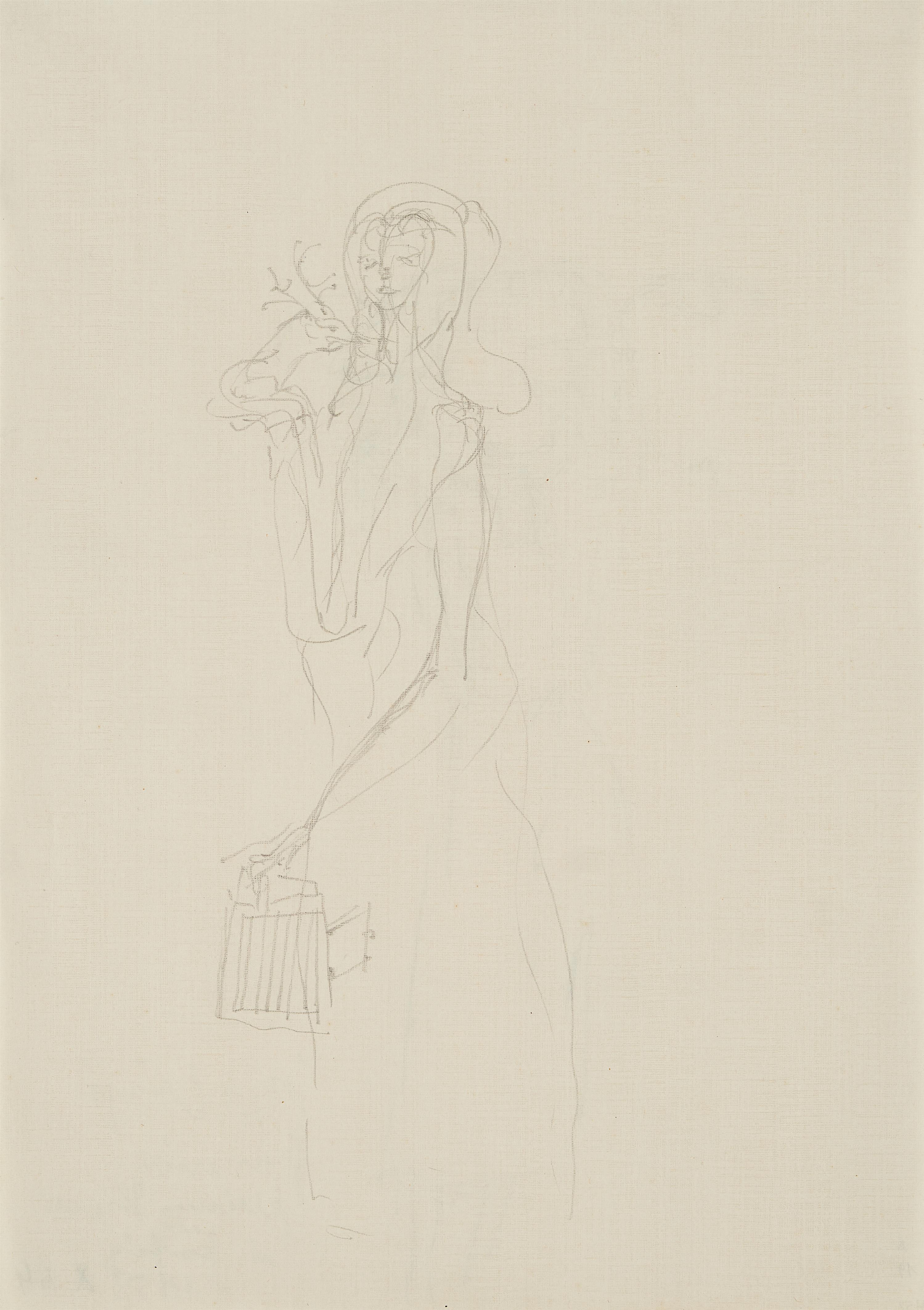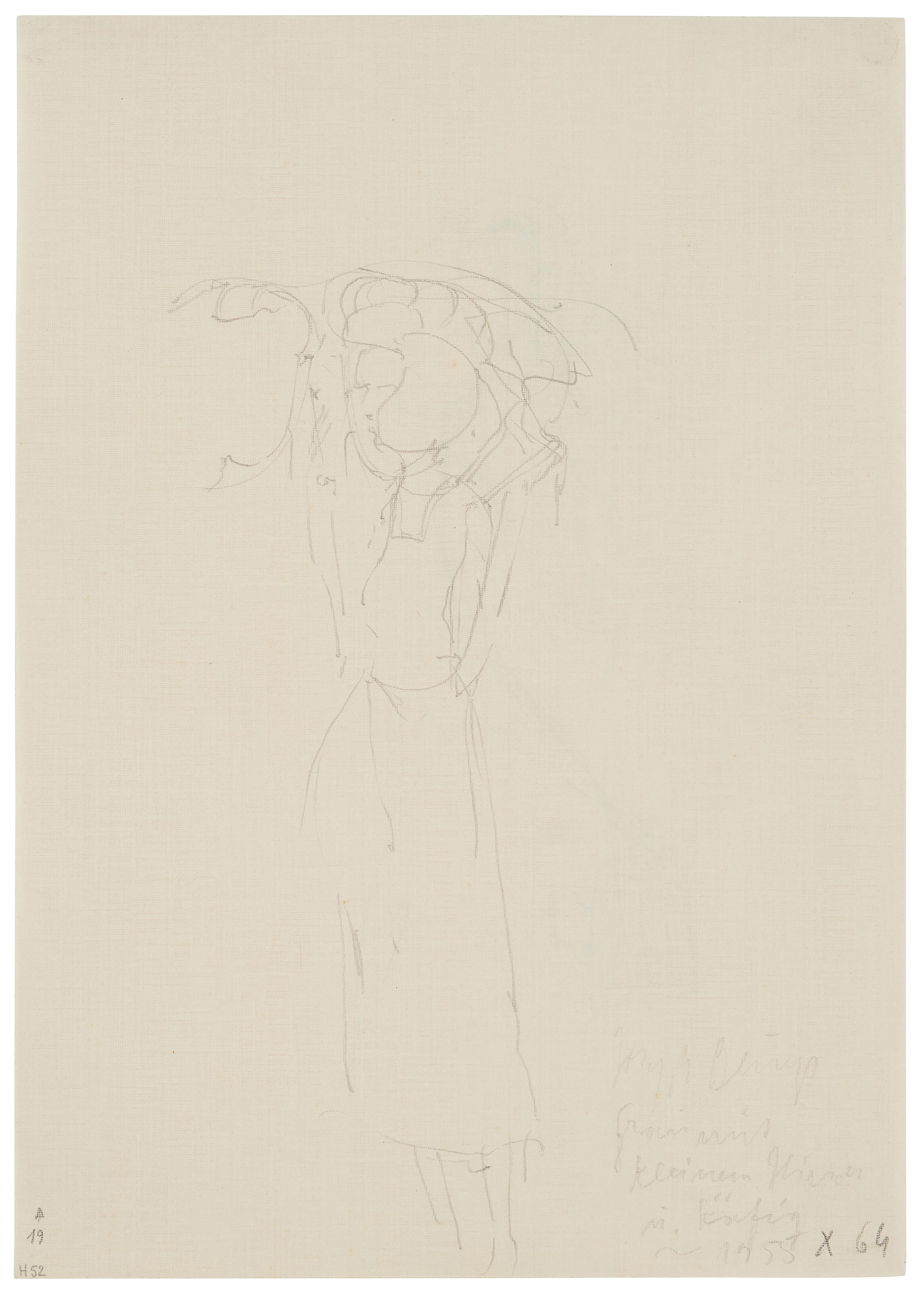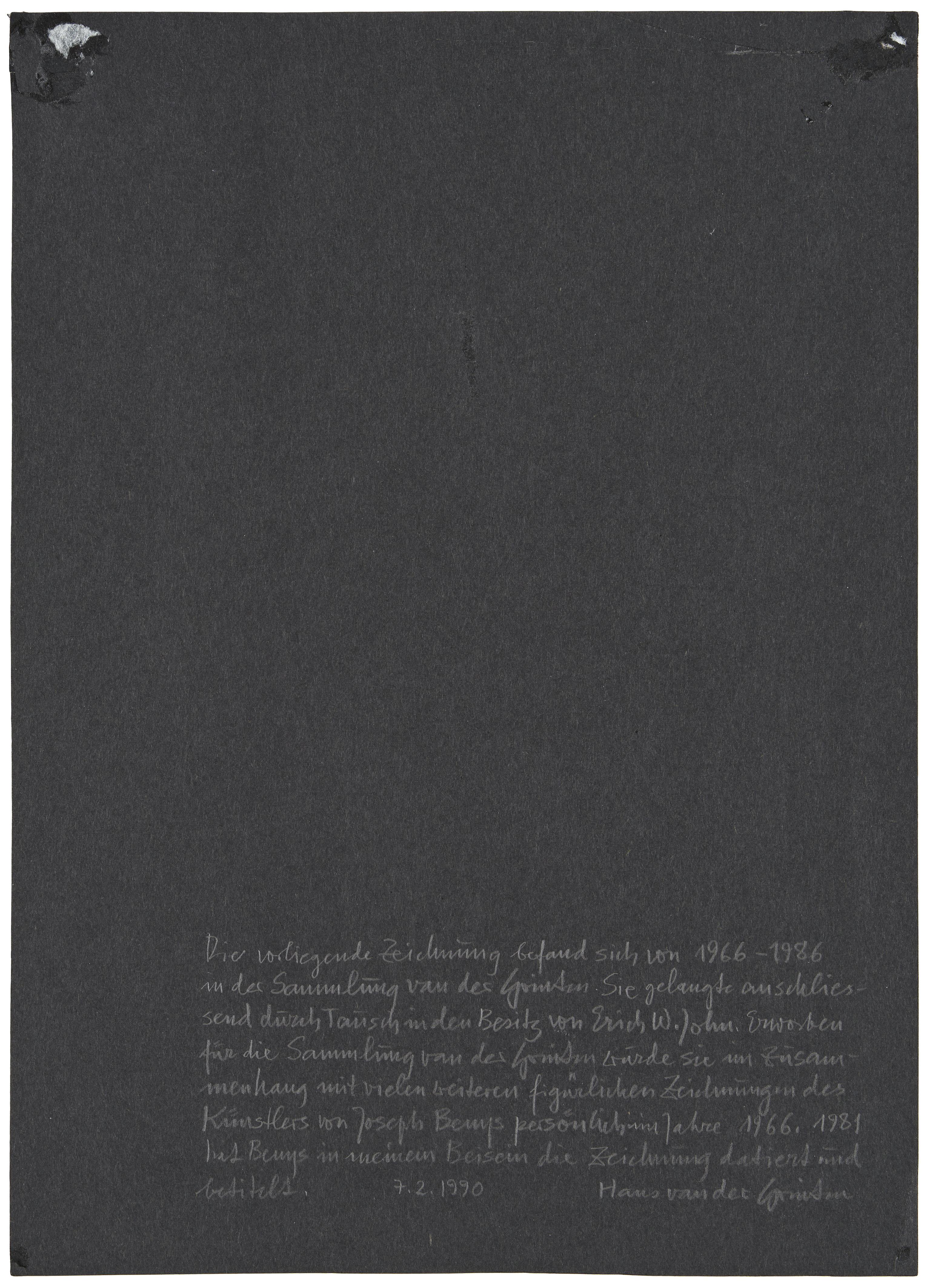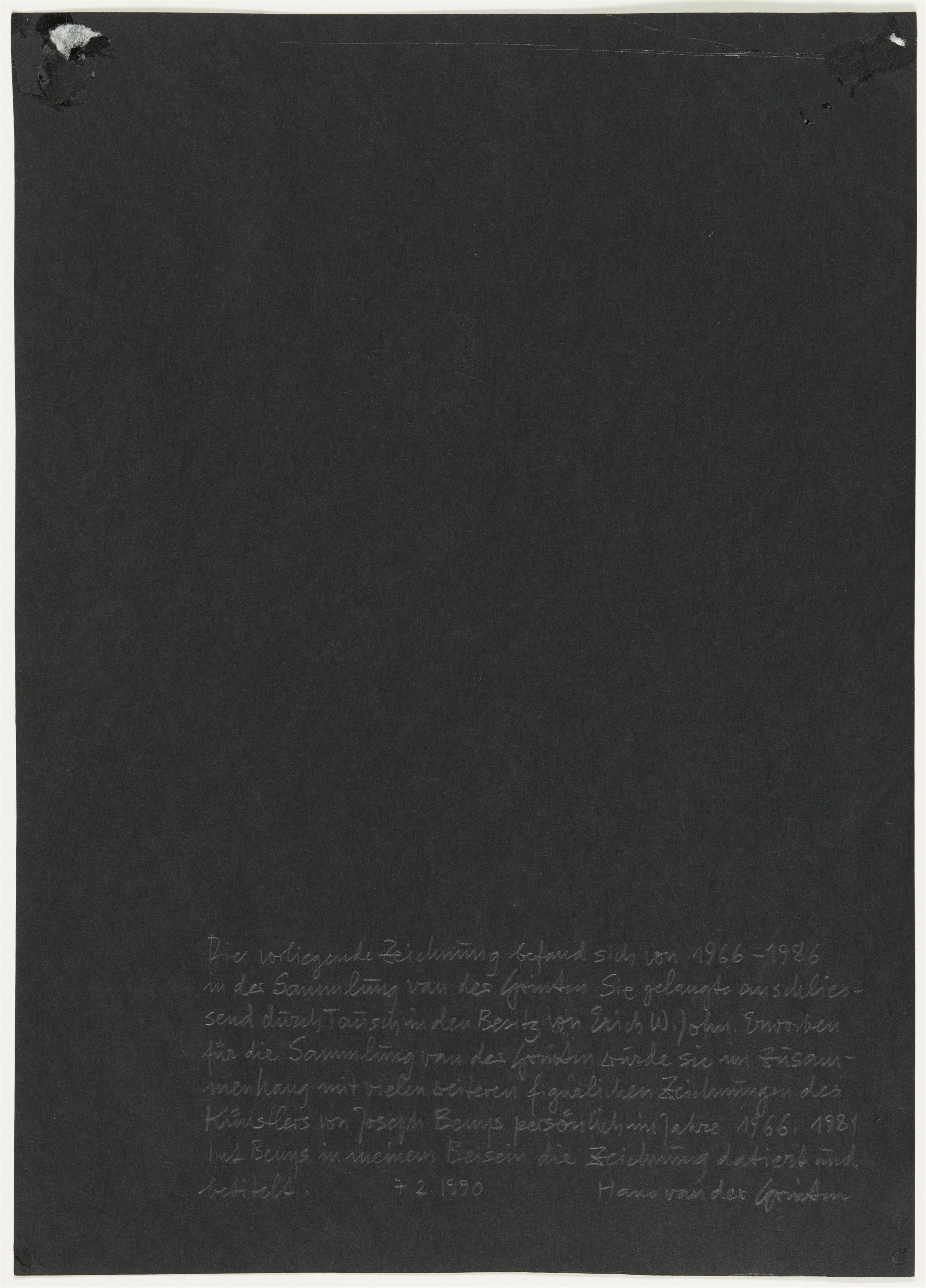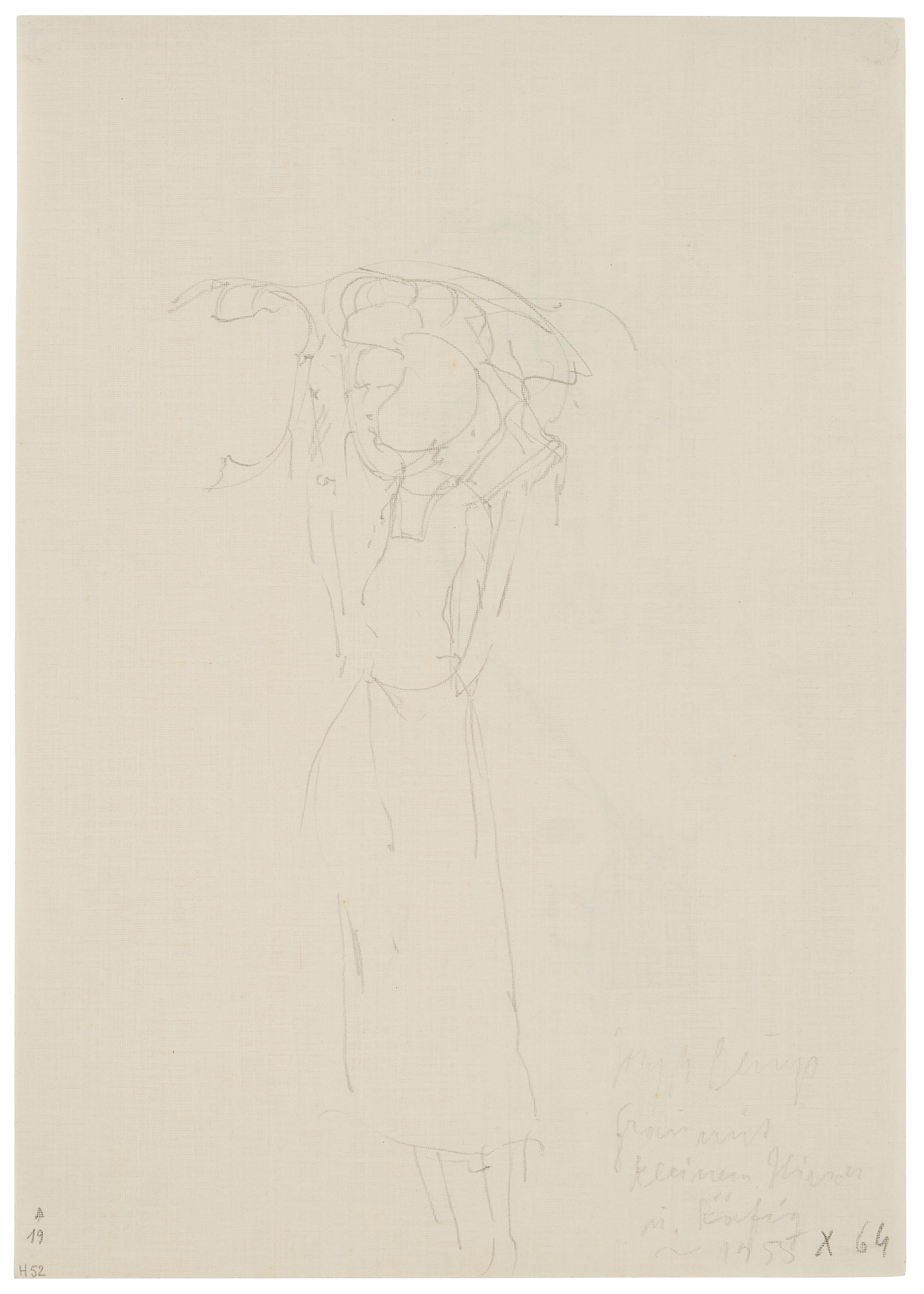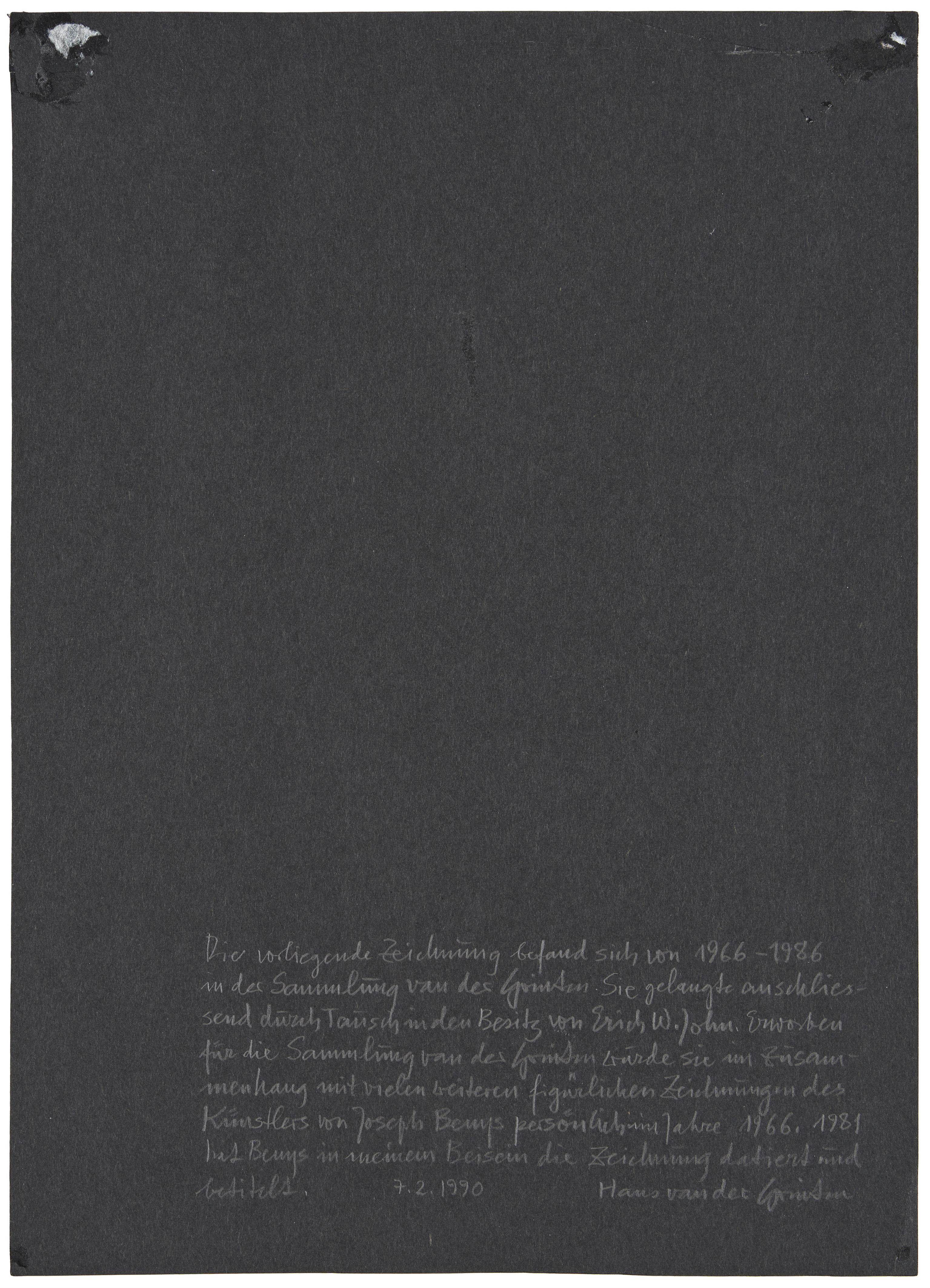Joseph Beuys
Frau mit kleinem Hirsch und Käfig
1955
Double sided drawing: each pencil on paper. 29.7 x 21 cm. 1981 signed, dated, titled 'Joseph Beuys Frau mit kleinem Hirsch u. Käfig 1955' verso. Designated with numbers. - With minor traces of age.
On card verso with handwritten notes by Hans van der Grinten dated 7.2.1990 on the provenance of this drawing. In his presence, Beuys subsequently dated and titled the drawing in 1981.
The drawing “Frau mit kleinem Hirsch und Käfig” [woman with stag and cage] pertains to a group of works of fine pencil drawings created during the 1950s. They mostly show women whom Beuys captured with swelling or diminishing lines, which are frequently retraced. The lines are so delicate that the figures seem to appear and disappear. The female nudes, girls, models, or mothers are often accompanied by an object or even an animal for further interpretation. In these pictorial inventions, the figures are not iconographically defined in the traditional sense, but also express their theme through their body and posture.
In the drawing on offer here, the woman is holding a cage in her left hand and a small stag in her right hand. In Beuys’ oeuvre, the stag has an emblematic meaning. For him, it has a masculine connotation and, since the mid-1950s, has also symbolised death and, beyond that, resurrection. As Martina Rudloff states, the early works by Beuys are strongly influenced by the esotericism of anthroposophical views and Rudolf Steiner’s natural sciences. He is concerned with the “Merging of the human being, his physical body or parts of it, into an overarching unity of cosmic space.” (Exhib.cat. Joseph Beuys, Walter Pichler, Zeichnungen, exhib.cat. Gerhard Marcks-Haus, Bremen, Käthe Kollwitz-Museum Berlin and Mannheimer Kunstverein, Mainz 1996, p.81.)
This early drawing formerly belonged to the renowned art collection of the brothers Hans and Franz Joseph van der Grinten. As one of the most important private collections in North Rhine-Westphalia, large parts of it went to Museum Schloss Moyland, where it is shown in changing presentations.
Provenance
Acquired directly from the artist; Van der Grinten collection (1966-1986); Erich W. John; Private collection, Rhineland Palatinate.
Exhibitions
Gent 1977 (Museum van Hedendaagse Kunst), Joseph Beuys, Tekeningen, Aquarellen, Gouaches, Collages, Olieverven, exhib. cat. no. 110, p.199 illus. (there dated 1958)

